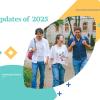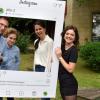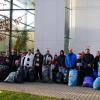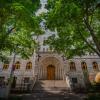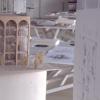Unique, Interactive Cube of the UP Faculty of Engineering and Information Technology
2020
Dec
15
The University of Pécs Faculty of Engineering and Information Technology (PTE MIK) developed a LED-cube in the programming of which they are cooperating with secondary school students. Moving figures or even mini stories can be visualized with the cube consisting of 512 LED lights. The consecutively flashing lights can form moving letters and animated texts, or even rotating graphs and bodies can be created using the colourful LEDs.
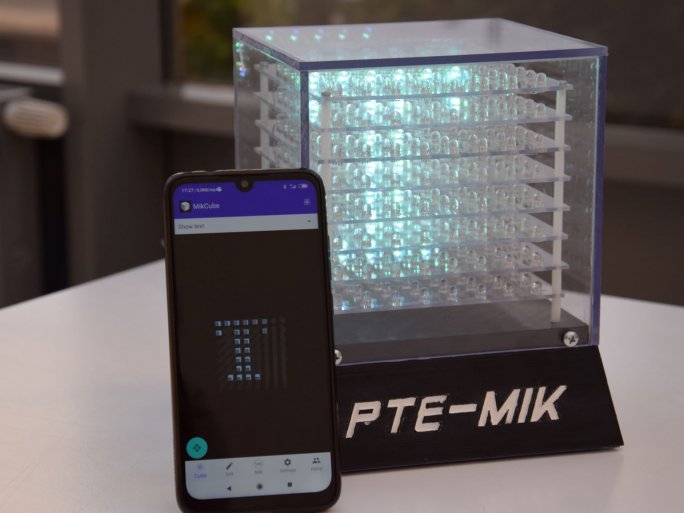
A unique feature of the cube is that it is connected to an android application, so that students can create a virtually infinite number of animated pictures by turning the LED lights constituting the cube on and off, in a way that they do not even have to be anywhere near the physical object. The new tool helps improve not just mathematical and programming skills, but spatial awareness and three-dimensional thinking as well, moreover, the cube provides a great opportunity for the students to become familiar with a slice of their possible future profession.
The Cube consisting of 8x8x8 LED lights can currently visualize eight preprogramed 3D pictures by turning the LEDs on and off. The android application modelled on the physical cube communicates with it via a Bluetooth interface, moreover, it enables the users to create an animation consisting of up to 100 layers. It is also possible these animations to be saved and shared. The project’s source codes are public so students can further develop it and they can share their completed animations with the developers. The best animations will be made publicly available by the faculty’s professionals and the young developer’s name will be cited under the programme’s ID card.
The Faculty of Engineering and Information Technology’s innovation was named MikCube, its uniqueness comes from the fact that its LED lights can be coloured and using the mobile app one can even programme the lights to shift in colour. Its special feature is that anyone who knows how to write programmes can create pictures and animations or even motion pictures and cartoon-like stories using the 512 LED lights. The physical cube does not have to be present for this to work since you can use your smartphone to download the finished pictures and share them with the other users. “Students can learn the basics of programming in a gamified way with the help of the cube. Additionally, this tool improves the users’ mathematical competences and special awareness. The LED cube is mainly used to introduce the faculty, we want to show secondary school students that if they gain admission to the UP Faculty of Engineering and Information Technology, they will be able to help in solving 21st century tasks as this one. Programming the cube provides an opportunity to become familiar with the aspects of programming work, which might contribute to them choosing the right career path,” said by Zoltán Zidarics, professor at the faculty’s Institute of Automation.
The Faculty announced the “ProgRace” competition last year for the fourth time. In this competition secondary school student-teams had to create stories using the LED cube. One of the teams visualized fireworks with the help of the small lights: A rocket shot up from the bottom of the cube and on the apex of its trajectory it exploded; it animated the growing fireball of the explosion perfectly and at the end, the remaining debris after the firework neatly fell back down. Even the announcers of the competition were awestruck by the complex and spectacular programme. The cube, even though it is yet to be widely applied, was such a great hit among university students that a foreign student chose it for the topic of her thesis. The tool serves as a model of modern control technology; the same principles apply during the creation process of the programmes as the ones future engineers will encounter during their work. With the important difference that they can achieve impressive results as the fruits of their labour rather soon and they cannot cause any harm with programme errors.
- Log in to post comments
University of Pécs | Chancellery | IT Directorate | Portal group - 2020.



